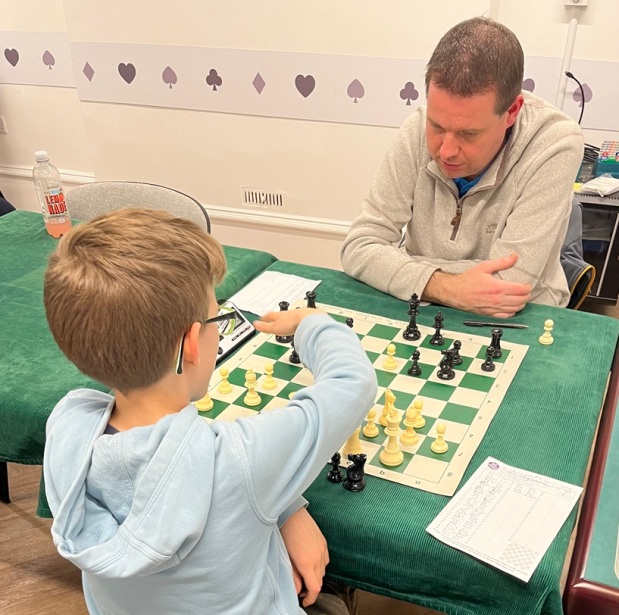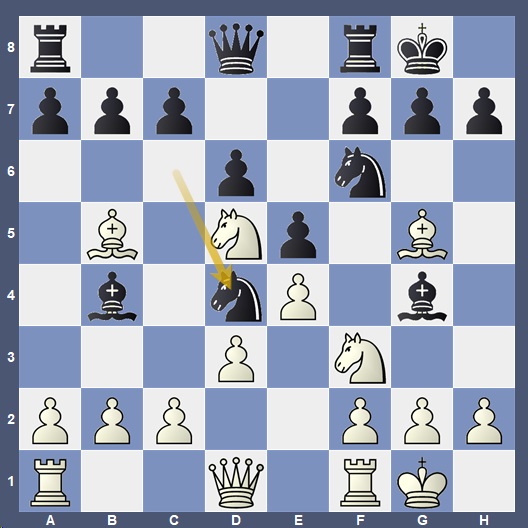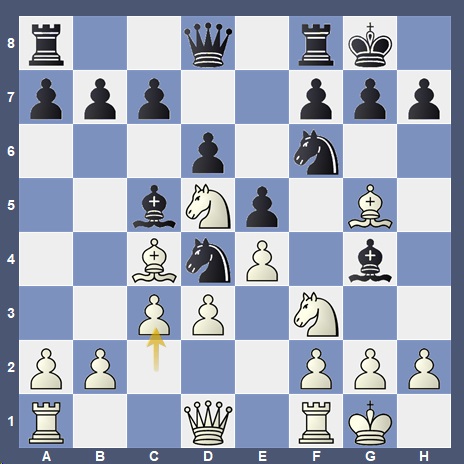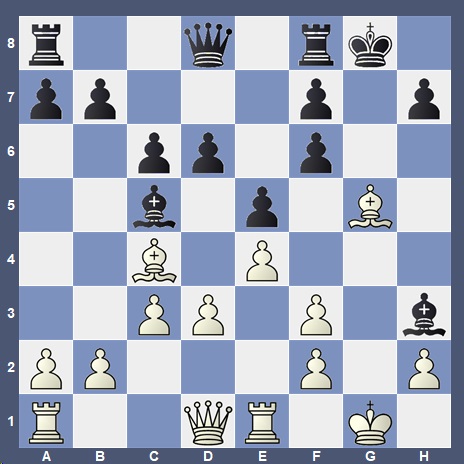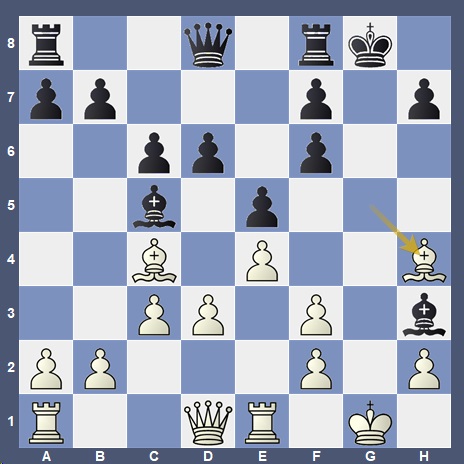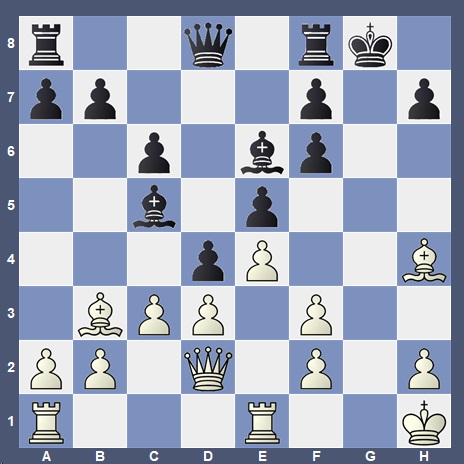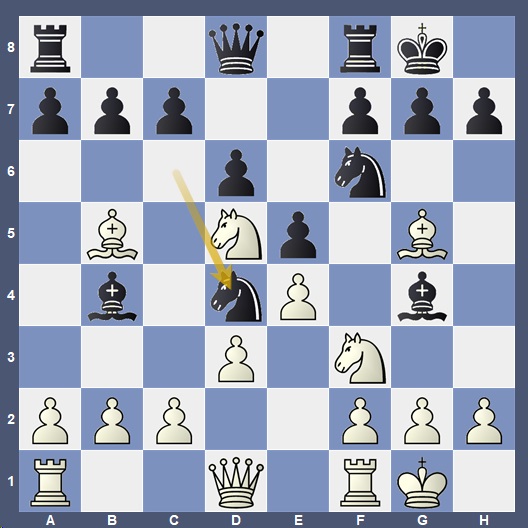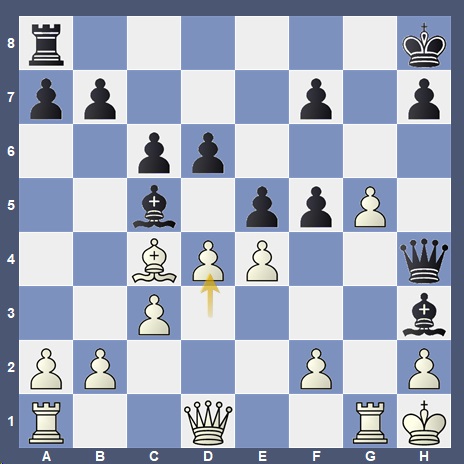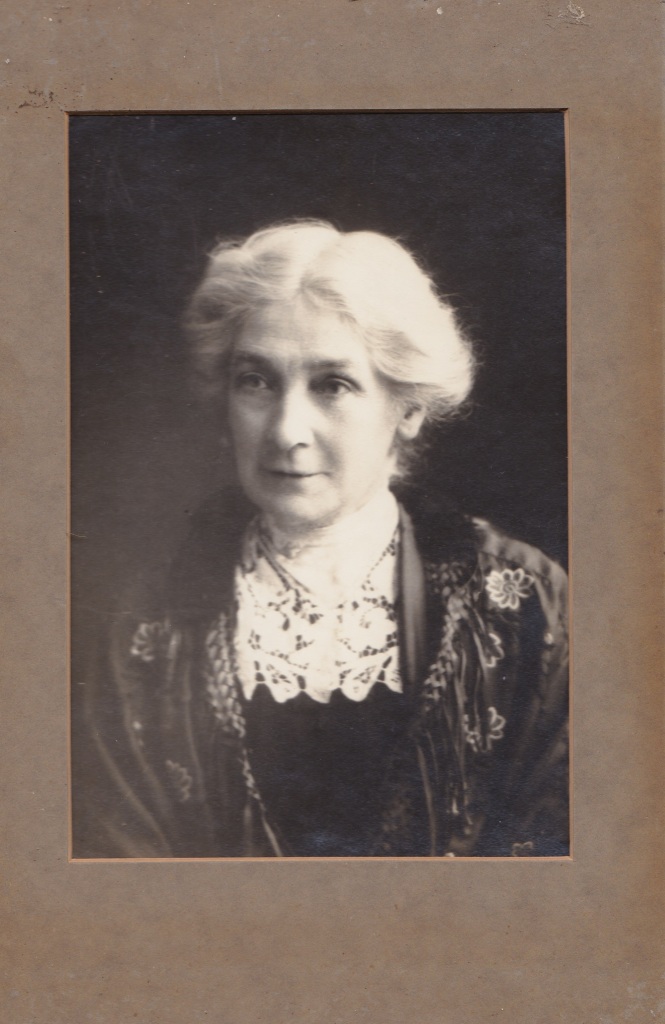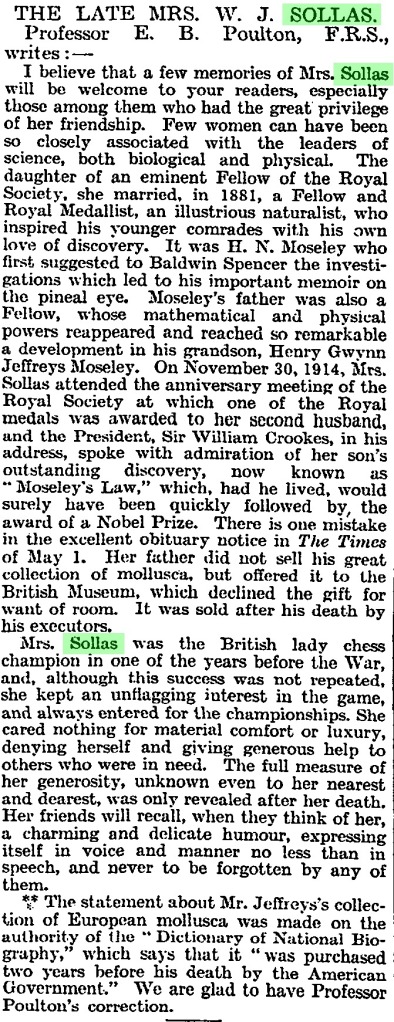Jan Murawski and Shambavi Hariharan played great games in our 6-0 defeat of Didcot 1 last week. Shambavi won a pawn in her favourite Caro-Kann and finished with a mating attack. Jan calmly cruised the complications of a dangerous gambit to expose his opponent’s king.
Jan Murawski – Nick Gough
Oxford City v Didcot 1, 20.03.2024
Albin Counter Gambit
1 d4 d5 2 c4 e5
Rarely seen in master chess these days, the gambit has a few strong grandmaster advocates including Alexander Morozevich.
3 dxe5 d4 4 Nf3 Nc6 5 g3 Be6 6 Nbd2 Qd7 7 a3 Nge7 8 Nb3
White usually plays 8 Bg2 here. One of the early games in this line went: 8…Ng6 9 Qa4 Be7 10 Nb3 0–0–0 11 Bg5 Kb8 12 Bxe7 Qxe7 13 0–0 Bd7 14 Na5 Nxa5 15 Qxa5 Bc6 16 Rfe1 d3 17 Qd2 Qc5 18 exd3 Bxf3 19 Bxf3 Nxe5 20 Re3 Rhe8 21 Rae1 Qd4 22 Bg2 f6 23 Re4 Qb6 24 d4 Rf8 25 Qc3 Nc6 26 d5 Ne5 27 c5 Qa6 28 Bf1 b5 29 cxb6 Qb7 30 bxc7+ Qxc7 31 Rb4+1–0 (Marshall-Janowski, Havana 1913).
8…Ng6 9 Nbxd4
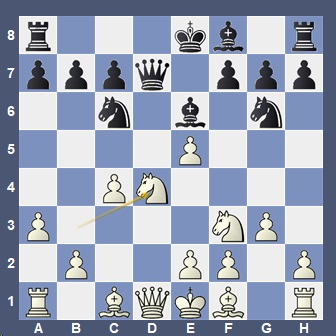
9…Bxc4?!
9…0–0–0 is the best move and can lead to interesting complications: 10 Be3 Ngxe5 11 Nxe5 Nxe5 12 Bg2 Bxc4 13 Qc2 Bc5 14 Nf5 Bxe2 15 Bxc5 Ba6 16 Nd6+ Kb8 17 0–0–0 cxd6 18 Bxd6+ Qxd6 19 Rxd6 Rxd6= 20 Qa4 Rhd8 21 Kb1 Nc4 22 Rc1 Rd4 23 Ka1 f6 24 Qc2 Rd2 25 Qf5 Ne5 26 Bh3 b6 27 Qxh7 Bc4 28 b3 Bxb3 29 Qxg7 Nc4 30 Rxc4 Bxc4 31 Bg4 Re8 0–1 (Levitt-Speelman, British Championship, 1982).
10 Nxc6 Qxc6 11 Bg2 Qa6
This is Nick’s Idea – he’s lost a pawn but Jan will have trouble castling since it allows …Bxe2.
Note that 11…Nxe5?? would lose to 12 Nxe5 Qxg2 13 Qd7 mate. The computer prefers 11…Rd8 12 Qc2 Nxe5 13 Bf4 Be6 14 Qxc6+ Nxc6 15 Bxc7 Rd7 16 Bf4 Be7 17 0–0 Bf6 with some compensation for the pawn.
12 b3 Bb5
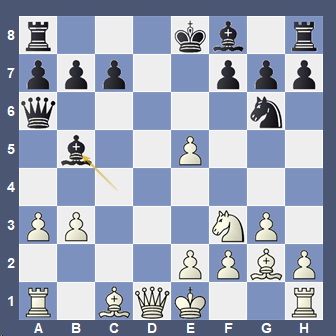
13 e6!?
Jan is happy to return his extra pawn to saddle Black with a weak pawn on e6 and open the a1-h8 diagonal for his bishop. A good alternative was 13 Bb2 Be7 14 Qc2 0–0 15 Nd4.
13…f6?
After the game Nick admitted this was a mistake because it allows Jan to castle quickly. 13…fxe6 14 Bb2 Bd6 15 Bxg7 Rg8 16 Bb2 0–0–0 gives Black play for the pawn.
14 0–0 Rd8
Not 14…Bxe2?? 15 Qd7 mate.
15 Qc2 Bd6 16 Nd4 0–0 17 Nxb5 Qxb5 18 a4 Qe5 19 Bb2 Qxe6 20 Bxb7

Jan has regained his pawn and kept the advantage of the two bishops. He is clearly better.
20…Rb8 21 Qe4
Now 21…Qxe4 22 Bxe4 Rxb3 loses to 23 Bd5+.
21…Qh3 22 Bd5+ Kh8 23 Qg2 Qh5 24 e3 Ne5 25 Bd4 a6 26 Rac1 Rfd8
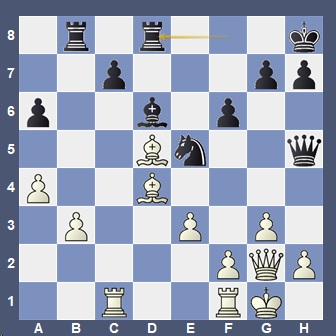
27 Bxe5
Jan makes an excellent practical decision to remove Black’s knight, seeing that his domination of the white squares will keep Nick on the defensive. Also strong was 27 f4 Ng6 28 Ba7 Rb4 29 Bf7 Qg4 30 Rfd1 Ne7.
27…Qxe5 28 Rc4 a5
28…Rxb3 29 Re4 Qxd5 30 Re8+ wins.
29 Re4 Qc3 30 Rh4 h6 31 Qh3
When each player controls squares of opposite colour, the one holding the initiative often has a decisive advantage, especially here where the heavy pieces add force to White’s attack. Jan threatens to win immediately with 32 Rxh6+.

31…Bf8
31…Qc2 is a more active way to secure the kingside. Black can only hope to relieve the pressure by exchanging pieces or sacrificing the exchange on b3, but he is never given the chance..
32 Bc4 Rd6 33 Qg4
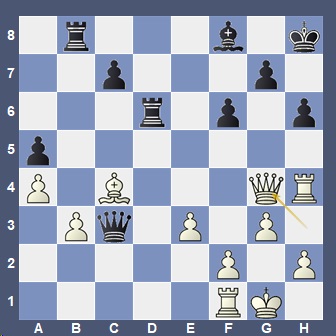
33…Rbd8?
The ugly 33…g5 was the only way to hang on.
34 Rxh6+
With mate next move.
1–0
Shambavi carefully guided her passed a-pawn up the board and then unsettled her opponent by switching to full attack mode.
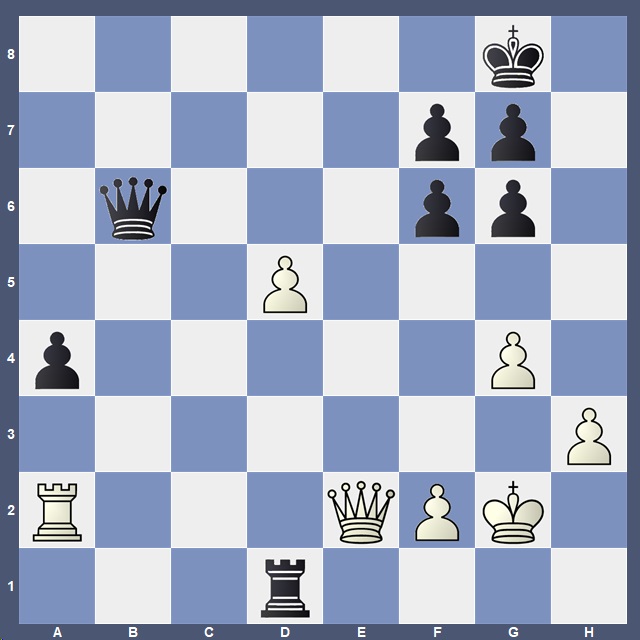
Reed – Hariharan
White’s king looks a little vulnerable whereas Black’s is sitting pretty behind his brick of pawns. Shambavi takes direct action.
36…Qb1! 37 Qe8+ Kh7 38 Qxa4
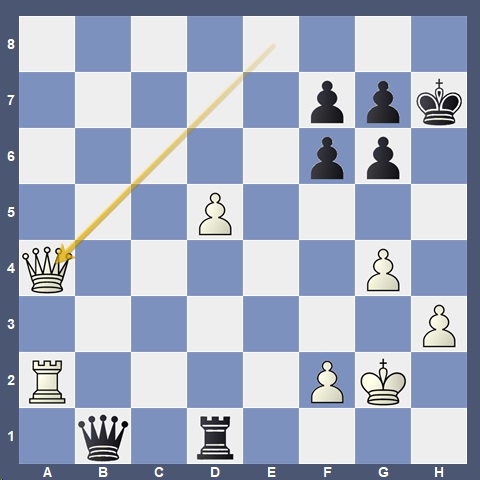
38…Rh1! 39 f4??
39.Qc4 seems to be best but Black is winning after 39…Qg1+ 40.Kf3 Rxh3+41,Ke2 Qg2 and Qf3+.
39…Qf1+ 40 Kg3 Rxh3 mate
A brutal finish to a smooth positional game.


